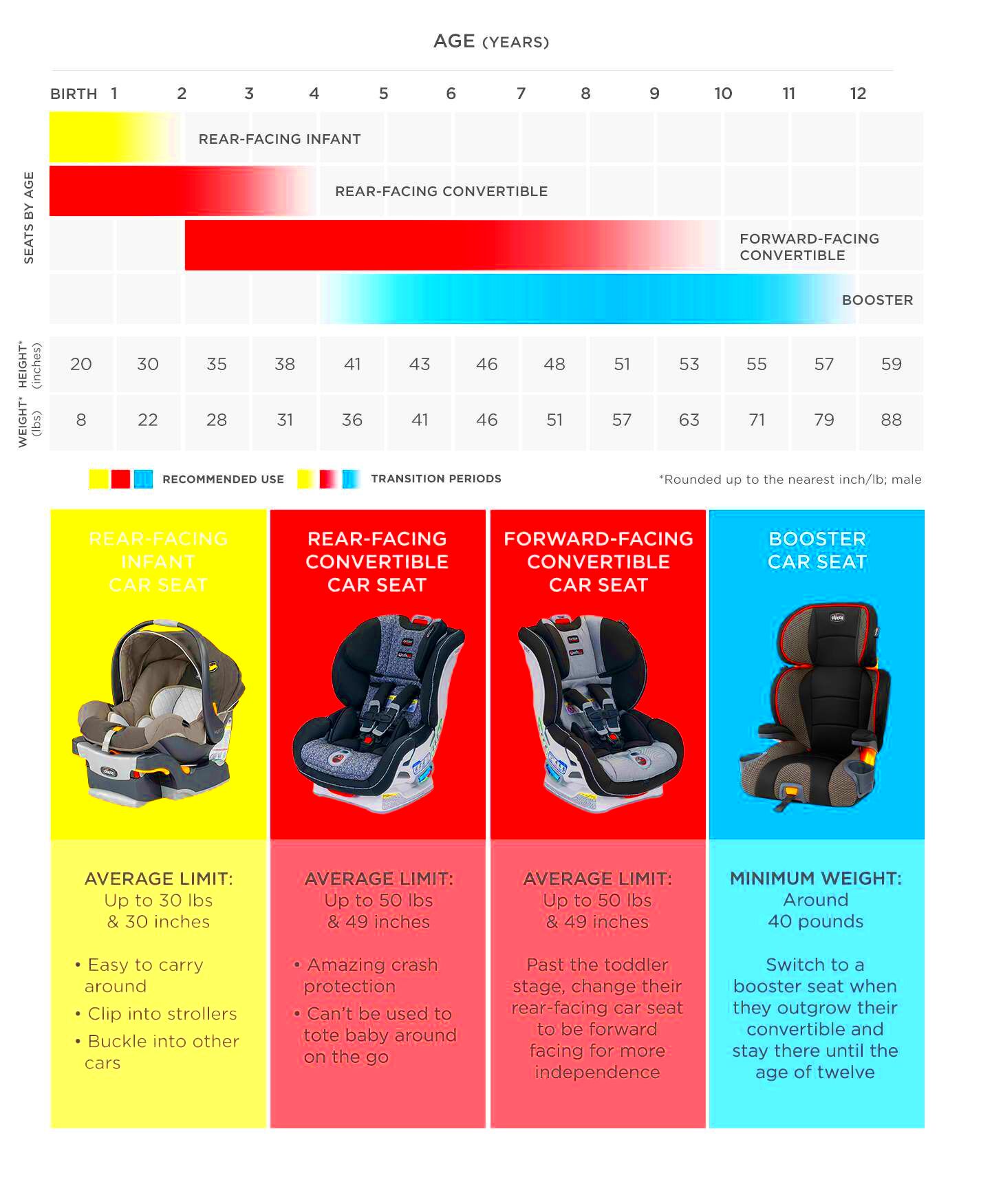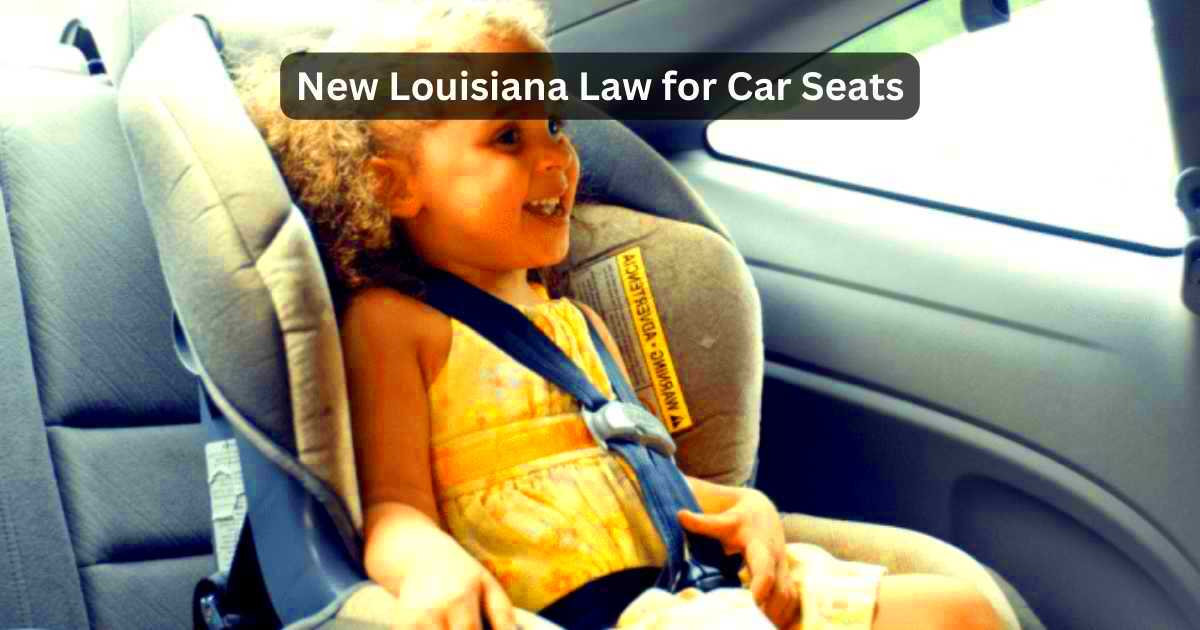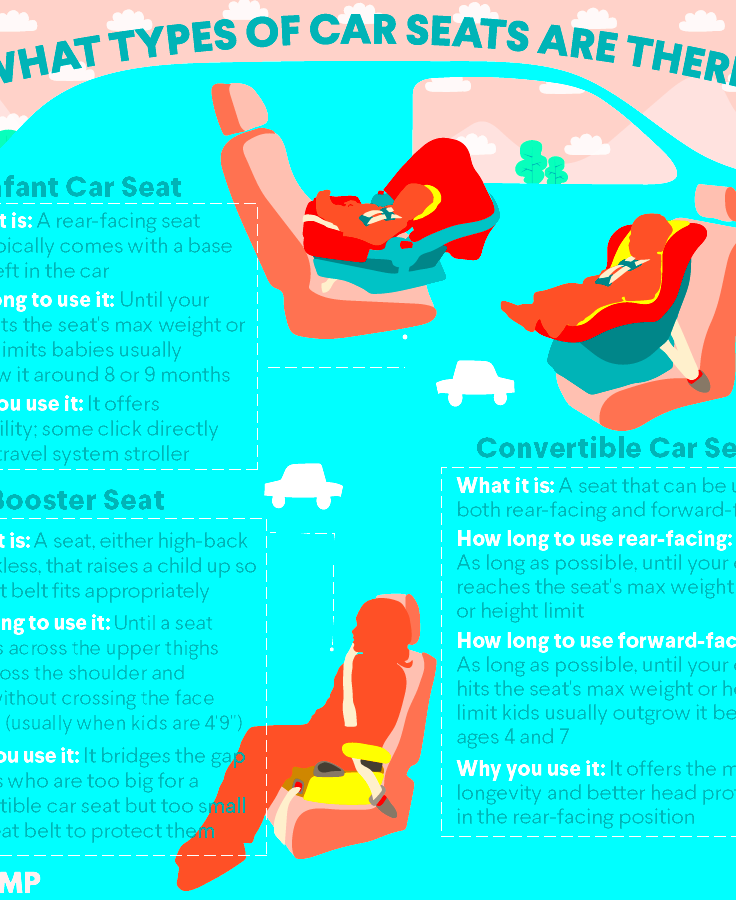Louisiana’s Car Seat Laws and What You Should Know
Louisiana has specific laws in place to ensure the safety of children in cars. Parents need to be aware of these regulations not for their childs safety but also to abide by state rules. The car seat laws in Louisiana are structured to change as your child matures, making sure they are always seated in the most suitable and secure position throughout their growth journey.
The purpose behind these laws is to ensure that using car seats properly can greatly lower the chances of getting hurt during an accident. Although understanding these rules may appear challenging at the beginning its really about ensuring that every child regardless of age or size is positioned in a way that prioritizes their safety.
Louisiana has car seat laws that specify rules and regulations for children from infancy to toddlerhood and beyond. Being aware of these laws can help you avoid fines and most importantly ensure your childs safety while traveling. In this article we will go over the essential information you need to stay updated and keep your little one secure on the road.
Age and Weight Requirements for Car Seats

In Louisiana there are regulations regarding car seats that outline age and weight criteria to ensure the safety of children in vehicle seats. To assist you in grasping these guidelines here’s a brief overview of the requirements.
- Infants (up to 2 years old): Children under 2 years old must be in a rear-facing car seat. This position provides the best protection for their developing neck and spine in the event of a collision.
- Toddlers (2 to 4 years old): Once your child outgrows the rear-facing seat, they should transition to a forward-facing car seat with a harness. This seat is designed to accommodate the increased size and weight of toddlers while still providing robust safety features.
- Preschool and Early School Age (4 to 6 years old): At this stage, children should use a booster seat. The booster seat positions the seat belt properly over the child’s shoulder and lap to ensure it fits securely across their body.
- Older Children (6 years and up): Children should continue using a booster seat until they are tall enough for the seat belt to fit correctly. Typically, this is when they reach about 4 feet 9 inches in height.
These recommendations assist in adjusting the car seat to accommodate your childs evolving requirements offering optimal safety at every stage of their development. Its always a good idea to check the guidelines and review your car seat manual to make sure you have the appropriate type for your childs age and size.
Types of Car Seats and Their Uses

It’s essential to grasp the various kinds of car seats and their intended purposes to safeguard your child. Every seat is tailored to a specific phase of your child’s growth, so being aware of when to use each one can significantly impact safety. Let’s delve into the different car seat options.
- Rear-Facing Car Seats: Ideal for infants and toddlers, these seats should be used from birth until your child reaches the maximum height or weight limit specified by the car seat manufacturer. Rear-facing seats provide crucial support for a child’s head, neck, and spine during a collision.
- Forward-Facing Car Seats: Once your child has outgrown their rear-facing seat, they should transition to a forward-facing car seat with a harness. These seats are designed to protect children who are a bit older but still need the support of a five-point harness.
- Booster Seats: As children grow, booster seats help position the seat belt correctly on their body. Booster seats are used until the vehicle’s seat belt fits properly without the booster, typically when the child is around 4 feet 9 inches tall.
- Convertible Car Seats: These versatile seats can be used in both rear-facing and forward-facing positions, making them a great long-term investment. They can adapt as your child grows, providing continued safety and comfort.
Based on what I’ve seen picking a car seat can be a bit daunting at times. However putting in the effort to research and grasp the nuances of each type ensures that your little one is always secure during rides. Keep in mind that the car seat is the one that suits your childs needs and is properly installed in your vehicle. Additionally staying informed about safety standards and recalls can play a role, in keeping your child safe during every journey.
Proper Installation of Car Seats

Properly installing a car seat is crucial for keeping your child safe while driving. I still recall how challenging it was to set up a car seat for my baby. It was like piecing together a tricky jigsaw puzzle. Doing it correctly not only brings you reassurance but also ensures that the car seat works optimally during an accident.
Here’s a detailed walkthrough to assist you in getting everything set up correctly.
- Read the Manual: Both your car seat and vehicle manuals contain crucial information. The car seat manual will guide you on how to secure the seat and harness your child correctly. The vehicle manual will tell you about the best seat locations and how to use the seat belts or LATCH system.
- Choose the Right Location: The back seat is the safest place for children under 13 years. The middle seat is often the safest spot if it’s equipped with proper anchorage. Ensure the seat fits snugly in the chosen position.
- Secure the Car Seat: Use either the seat belt or the LATCH (Lower Anchors and Tethers for Children) system to secure the car seat. If using a seat belt, make sure it’s locked into place. With LATCH, ensure the anchors are attached firmly and the car seat is immobile.
- Check the Angle: For rear-facing seats, the angle is crucial. Most car seats have built-in indicators to help you find the correct angle. For forward-facing seats, ensure the harness straps are at or above your child’s shoulders.
- Verify the Fit: Once installed, check that the seat doesn’t move more than an inch side-to-side or front-to-back. The harness should be snug against your child’s chest, with no slack in the straps.
Keep in mind that properly securing a car seat can make a difference between a small accident and a significant injury. Regularly inspecting its installation and ensuring it’s adjusted to fit your child’s size as they grow will contribute to their safety, during every trip.
Exceptions and Special Cases in Car Seat Laws
Louisiana has car seat laws that are pretty straightforward but there are a few exceptions and special situations that are important to keep in mind. I’ve come across these details while assisting friends and family with car seat rules and knowing them can help you avoid surprises down the road.
- Medical Exemptions: If a child has a medical condition that makes it impossible to use a standard car seat, a doctor’s note may be required. This note should detail the medical reasons and any recommended alternative safety measures.
- Temporary Exceptions: In rare cases, temporary exceptions might apply, such as during emergency situations where a different type of car seat or installation might be necessary. However, these should be avoided whenever possible, and you should return to standard practices as soon as feasible.
- Car Pooling and Ridesharing: For those using carpooling or ridesharing services, car seat laws still apply. It’s crucial to ensure that any vehicle used adheres to safety standards, and having your own car seat available is a good practice. Some rideshare services offer car seats, but checking in advance is wise.
- Rental Vehicles: When traveling in rental cars, make sure to install your own car seat. Rental companies might provide car seats, but these might not always meet the latest safety standards or be suitable for your child’s specific needs.
Dealing with these exceptions can be challenging, but keeping yourself updated helps you be ready for whatever situation arises. Safety should always be a top priority so dont hesitate to reach out to local authorities or car seat specialists if you have any concerns.
Penalties for Violating Car Seat Laws
Failing to comply with Louisianas car seat regulations could bring about consequences beyond a mere reprimand; it may lead to hefty fines. Drawing from my personal observations I have witnessed the effects of these penalties on families, in terms of their well being and finances. Heres a rundown of the potential repercussions you should be aware of.
- Fines: Failing to comply with car seat regulations can result in fines. These fines vary depending on the nature of the violation and can increase with repeated offenses. It’s a financial penalty that can be easily avoided by following the laws.
- Points on Driving Record: In some cases, violations may also add points to your driving record. Accumulating too many points can lead to higher insurance premiums or even license suspension.
- Legal Consequences: Continued disregard for car seat laws could potentially lead to more serious legal consequences, such as court appearances or mandatory safety courses. These legal repercussions can be time-consuming and costly.
- Increased Risk of Injury: Beyond legal and financial penalties, the most significant consequence is the increased risk of injury to your child. Proper car seat use is essential for their safety, and non-compliance can lead to serious harm in the event of an accident.
Making sure that your car seat is set up and used properly not only helps you follow the rules but also plays a crucial role in keeping your little one safe. Investing effort in grasping and following these guidelines can prevent fines and safeguard your loved ones health.
Resources for Car Seat Safety in Louisiana
Locating trustworthy sources for car seat safety in Louisiana can make a difference for parents. I recall my sisters experience when she was about to have her first child she was inundated with a flood of safety information. The positive aspect is that Louisiana provides a range of helpful resources to assist parents in making sure their car seats are properly installed and utilized.
Here are some valuable sources of information that can assist you.
- Louisiana Highway Safety Commission (LHSC): The LHSC provides up-to-date information on car seat laws and safety guidelines. They also offer resources like car seat safety checks and educational materials. You can visit their website or contact them directly for guidance and support.
- Local Health Departments: Many local health departments in Louisiana offer car seat inspection events and safety workshops. These are excellent opportunities to have your car seat checked by certified technicians and to receive personalized advice.
- Child Passenger Safety Technicians: Certified technicians are available throughout Louisiana to assist with car seat installation. You can find a technician through the National Highway Traffic Safety Administration (NHTSA) website, which provides a searchable database of local experts.
- Community Organizations: Nonprofit organizations like Safe Kids Louisiana offer car seat safety programs, including free or low-cost car seat distribution for those in need. They also provide educational resources to help parents and caregivers.
- Online Resources and Forums: Websites and online forums dedicated to car seat safety can be valuable. They often feature detailed guides, video tutorials, and community advice on proper car seat usage and installation.
Using these tools can greatly help to ensure that your car seat is set up and used correctly. It’s reassuring to know that there’s assistance available to help protect your child while driving.
How to Ensure Compliance with Louisiana’s Car Seat Laws
To make sure you follow Louisianas car seat laws, it’s important to take steps. I remember how my friend discovered that compliance wasn’t just about being aware of the rules but also about routinely inspecting and modifying car seat usage as her child matured. Here’s a helpful guide to keep you on the right path.
- Regularly Review the Laws: Keep yourself updated with the latest car seat laws by visiting official websites such as the Louisiana Highway Safety Commission. Laws can change, and staying informed ensures that you’re always following current regulations.
- Check Car Seat Manuals: Both your car seat and vehicle manuals are invaluable resources. They provide specific instructions on installation and usage that are crucial for compliance. Refer to these manuals often to ensure that the car seat remains correctly adjusted for your child’s age and size.
- Attend Safety Workshops: Participate in car seat safety workshops and events offered by local health departments or community organizations. These sessions often include practical demonstrations and personal advice from certified experts.
- Schedule Regular Inspections: Arrange for periodic car seat inspections by certified technicians. They can identify any potential issues with installation or usage and provide corrective guidance.
- Update Car Seat as Needed: As your child grows, make sure to transition them to the appropriate car seat. Monitor height and weight limits and adjust the seat type accordingly to ensure continuous compliance.
By following these measures you can feel assured that you are complying with the car seat regulations in Louisiana. Its all about staying updated taking initiative and consistently verifying that everything is set up properly to ensure your childs safety.
Frequently Asked Questions
Parents often have inquiries regarding car seat regulations and safety. Having dealt with similar worries I recognize the significance of obtaining straightforward responses. Below are some commonly asked questions regarding car seat safety in Louisiana.
- What is the best way to check if my car seat is installed correctly? The best way is to use the “inch test.” If the car seat moves more than one inch side-to-side or front-to-back when pulled at the belt path, it may not be installed correctly. You can also seek assistance from a certified car seat technician for a thorough inspection.
- When should I transition from a rear-facing to a forward-facing car seat? According to Louisiana law, children should remain in a rear-facing car seat until they are at least 2 years old and reach the maximum height or weight limit specified by the car seat manufacturer.
- Are there any exceptions to the car seat laws? Yes, there are medical exemptions for children with specific conditions that prevent them from using standard car seats. A doctor’s note is required in such cases. Additionally, temporary exceptions may apply in certain emergency situations.
- What should I do if my car seat is recalled? If your car seat is recalled, follow the manufacturer’s instructions for addressing the recall, which may include returning the seat for a replacement or repair. You can check for recalls on the National Highway Traffic Safety Administration (NHTSA) website.
- Can I use a second-hand car seat? It’s not recommended to use second-hand car seats unless you can verify their history and ensure they have not been involved in any accidents. Always check for expiration dates and ensure the seat meets current safety standards.
These responses aim to address questions regarding the safety of car seats. Its important to prioritize your childs safety and being aware of the specifics can assist you in making choices.
Conclusion
Figuring out the car seat laws in Louisiana might feel overwhelming at first but with a little knowledge of the rules and some helpful resources it can become much simpler. Based on my experience making sure your car seat is installed and meets state requirements brings peace of mind when it comes to keeping your little one safe while driving. It’s not only about steering clear of fines or legal issues; it’s also about providing your child with the utmost safety during car rides.
Keeping up with the laws going to safety workshops and regularly checking how your car seat is installed are all ways to make sure you’re following the rules and most importantly keeping your child safe. It’s an ongoing process that needs care and attention but the reassurance it brings is priceless. Always keep in mind that the little effort you invest in car seat safety goes a long way in ensuring your childs well being.


